Growing Lettuce.
The sweetest lettuce comes from a home garden. Nurtured, well watered lettuce grown in cool weather is hard to beat. For the same price as a head of lettuce, you can grow a 20 foot long row with one of our generous packets. That’s a lot of lettuce! Each variety has its’ own flavor and texture. Oakleaf, Romaine and Buttercrunch are favored by by our customers, but variety is beautiful in a salad bowl. Plant some Red Sails and Green Salad Bowl for different colors and textures. Black Seeded Simpson and Great Lakes 659 were specially bred for warm climates. Successive plantings insure a steady supply when the summer heat causes lettuce to bolt. Keep your salad garden well watered as lettuce get bitter when it dries out and the sweet flavor does not return.
Heirloom lettuce seeds can be planted as soon as the ground can be worked. Preferring cool weather, the earlier you start it, the better. For a ‘cut and come again’ salad garden, simply sprinkle the seeds before the last heavy snows of early spring. They will know when to grow. For larger heads of lettuce, sow in garden 1/4′ to 1/2″ deep in rows 1′ to 1 1/2′ wide. Thin to 6″ to 8″ apart for leaf lettuces. For head lettuce, thin to 12″ to 18″ apart. Rich soil and plenty of water will produce the best tasting lettuce. Consider floating row covers for pest protection and to moderate temperature. Lettuce will tolerate light shade.
The most favorable conditions for growing good lettuce are rich soil, plenty of moisture, and steady growth from the time the seeds are planted until time for use. Seed germinates quickly and may be planted as soon as the cold wet days of spring are past. Sow about 15 to 18 seeds to the foot of row to a depth of not more than 1/4 inch.
When growing Head Lettuce, it is necessary that the heading season take place during cool weather. For this reason it is a good policy in sections where hot weather sets in early in the season, to sow the seed in boxes indoors or in hotbeds and set out as early as weather conditions permit. If this is not practical, seed may be sown in the open ground as early as soil and weather conditions are favorable. Thin 10 inches apart in the row and give thorough cultivation. A side dressing of nitrate of soda, given as soon as the plants have made some growth, will be found beneficial.
Good companion crops are beets, broccoli, brussels sprouts, cabbage, carrots, cauliflower, chives, garlic, kale, kohlrabi, onions, radishes and strawberries. Fennel is a bad companion for lettuce, however it does not play well with others.
-
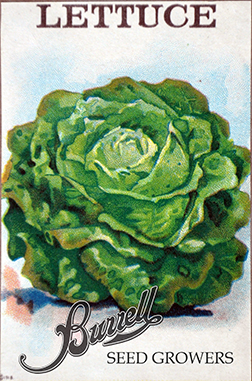
Lettuce Head – Boston White
$2.60 – $23.50 -
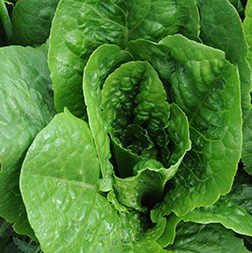
Lettuce Head – Romaine Parris Island
$2.60 – $20.10 -

Lettuce Head – Tom Thumb Dwarf
$2.60 – $23.50 -

Lettuce Leaf – Salad Bowl – Red
$2.60 – $23.50 -
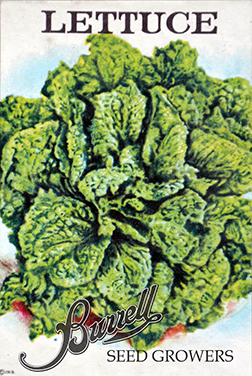
Lettuce Leaf – Salad Bowl – Green
$2.60 – $21.20 -
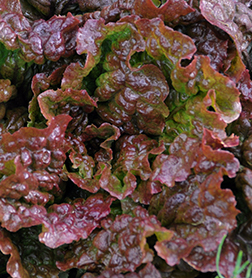
Lettuce Leaf – Red Sails
$2.60 – $93.50 -
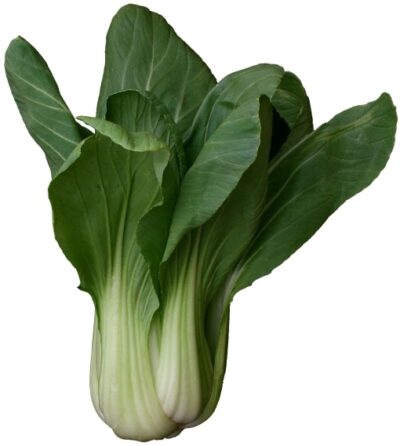
Greens – Pac Choi Cabbage
$2.60 – $15.50 -
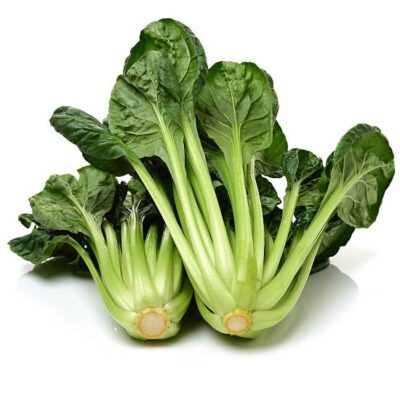
Greens – Tatsoi Cabbage
$2.60 – $15.50 -

Lettuce Leaf – Oakleaf
$2.60 – $21.20 -

Lettuce Leaf – Prizehead
$2.60 – $21.20 -

Lettuce Leaf – Black Seeded Simpson
$2.60 – $20.10 -
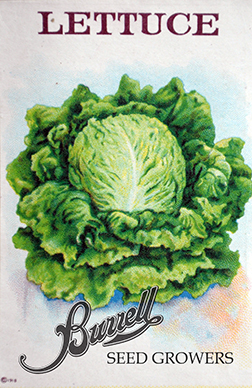
Lettuce Head – Iceberg
$2.60 – $20.10 -

Lettuce Head – Great Lakes 659
$2.60 – $55.70 -

Lettuce Head – Buttercrunch
$2.60 – $20.10 -

Lettuce Head – New York 12 Crisphead
$2.60 – $21.20
-

Lettuce Head – Boston White
$2.60 – $23.50 -

Lettuce Head – Romaine Parris Island
$2.60 – $20.10 -

Lettuce Head – Tom Thumb Dwarf
$2.60 – $23.50 -

Lettuce Leaf – Salad Bowl – Red
$2.60 – $23.50 -

Lettuce Leaf – Salad Bowl – Green
$2.60 – $21.20 -

Lettuce Leaf – Red Sails
$2.60 – $93.50 -

Greens – Pac Choi Cabbage
$2.60 – $15.50 -

Greens – Tatsoi Cabbage
$2.60 – $15.50 -

Lettuce Leaf – Oakleaf
$2.60 – $21.20 -

Lettuce Leaf – Prizehead
$2.60 – $21.20 -

Lettuce Leaf – Black Seeded Simpson
$2.60 – $20.10 -

Lettuce Head – Iceberg
$2.60 – $20.10 -

Lettuce Head – Great Lakes 659
$2.60 – $55.70 -

Lettuce Head – Buttercrunch
$2.60 – $20.10 -

Lettuce Head – New York 12 Crisphead
$2.60 – $21.20
Growing Lettuce.
The sweetest lettuce comes from a home garden. Nurtured, well watered lettuce grown in cool weather is hard to beat. For the same price as a head of lettuce, you can grow a 20 foot long row with one of our generous packets. That’s a lot of lettuce! Each variety has its’ own flavor and texture. Oakleaf, Romaine and Buttercrunch are favored by by our customers, but variety is beautiful in a salad bowl. Plant some Red Sails and Green Salad Bowl for different colors and textures. Black Seeded Simpson and Great Lakes 659 were specially bred for warm climates. Successive plantings insure a steady supply when the summer heat causes lettuce to bolt. Keep your salad garden well watered as lettuce get bitter when it dries out and the sweet flavor does not return. Grandma planted a few lettuce seeds every two weeks all season long.
Heirloom lettuce seeds can be planted as soon as the ground can be worked. Preferring cool weather, the earlier you start it, the better. For a ‘cut and come again’ salad garden, simply sprinkle the seeds before the last heavy snows of early spring. They will know when to grow. For larger heads of lettuce, sow in garden 1/4′ to 1/2″ deep in rows 1′ to 1 1/2′ wide. Thin to 6″ to 8″ apart for leaf lettuces. For head lettuce, thin to 12″ to 18″ apart. Rich soil and plenty of water will produce the best tasting lettuce. Consider floating row covers for pest protection and to moderate temperature. Lettuce will tolerate light shade.
Good companion crops are beets, broccoli, brussels sprouts, cabbage, carrots, cauliflower, chives, garlic, kale, kohlrabi, onions, radishes and strawberries. Fennel is a bad companion for lettuce, however it does not play well with others.

